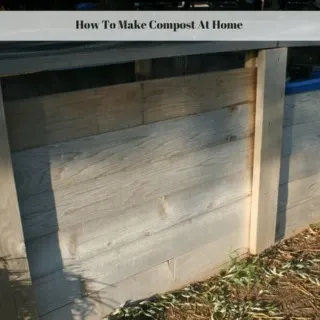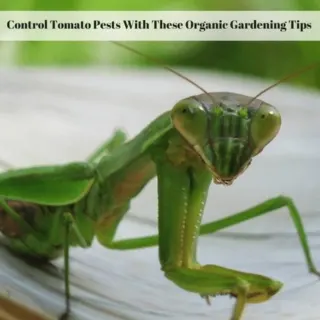Learn how to extend the spring vegetable garden and grow those cool weather plants that normally die out or turn bitter right through the summer and into fall.
Cool-weather plants, such as lettuce, cabbage, broccoli, and peas, are happiest when planted in the early spring and harvested before the heat of summer sets in.
So does that mean you can't have fresh lettuce during the summer months?
Of course not!
Simply continue to plant your cool season vegetables every two weeks throughout the summer months, keep them cool and you can harvest into fall or even winter with protection.

Extend The Spring Vegetable Garden Harvest
You can harvest the cool-season crops started during the summer in the fall and even into winter.
The harvest of many of these crops can be extended into winter with the use of a simple cold frame.
Some crops such as kale, Jerusalem artichokes and Brussels sprouts actually taste better after they have been through several light frosts.
The main problem with growing cool-weather plants once the heat of summer arrives is that they tend to bolt, or go to seed.
When a plant bolts, it quickly sends up a tall flower stalk, and once that happens, the flavor of the crop declines.
Create the Right Environment For Those Spring Vegetable Garden Plants
You can extend the season of your cool-weather crops in several ways.
One is to grow these crops in a tunnel house during the fall and winter.
To create the right environment for summer install shade cloth along the length of the tunnel.
Shade cloth is a synthetic fabric manufactured to let a certain percent of sunlight through.
Using shade cloth over plants effectively keeps temperatures down by creating shade.
For additional temperature control inside the tunnel house, raising the sides of the tunnel house will release any built-up warm air.
In a more elaborate set-up, a mist system inside a tunnel house in addition to shade cloth will guarantee that the temperature will stay comfortable for your cool-weather plants.

Shade Is Essential For Spring Vegetable Garden Plants
Another way to achieve success with cool-weather plants in the heat of summer is to use natural or man-made shade.
If you have an area that’s shaded during part of the day, try planting cool-weather crops there.
Try to pick an area that is shaded during the afternoon to help keep the intense afternoon sunlight and heat off your cool-weather crops.
A third way to keep these plants cool is simply to put a roof over them.
Drive four stakes, T-posts, or fence posts into the ground and suspend shade cloth or a lattice across the tops of the posts.
This "roof" will provide filtered shade while still letting rainwater through.
Keep your spring vegetable crops as cool as possible by offering the plants shade, plenty of water and top dressing the soil around your plants with one to three inches of finished compost.
This is the key to successfully growing cool-weather crops in the heat of summer.
Planting Your Garden
How Much To Plant In Your Garden
This article will help you figure out how much to plant in your garden depending on your family's size and whether you want to preserve the food or not.
When to Plant in Spring: Early Season Garden Tips
Know when to plant in spring by using these early garden season tips. These tips will allow you to get a head start on your vegetable garden.
Benefits Of Container Gardening During Changeable Weather Conditions
Changeable weather conditions certainly impacts gardeners who wish to grow their plants in the ground, but there is a solution. Learn about the benefits of container gardening and how it can help gardeners deal with climate change!
How To Grow Tomatoes
Learn how to grow tomatoes and how to plant tomatoes in a garden. Growing great tomatoes is easy if you follow a few simple steps.
Mastering Sweet Potato Gardening: How to Plant Sweet Potato Plants
Unlock the secrets of successful gardening with our guide on how to plant sweet potato plants for a bountiful harvest!
Gardening Tips For Beginners
These gardening tips for beginners will help you get your first garden started right. Tips on gardening planning, caring for bareroot plants and more.
How To Garden In Winter Indoors And Outdoors
Learn how to garden in winter indoors and outdoors. There are many vegetables and herbs that don't mind the cold or thrive in containers.
How To Make Compost At Home
Learn how to make compost at home using materials you already have on hand and are likely to throw into the trash and send to the local landfill.
Control Tomato Pests With These Organic Gardening Tips
These organic gardening tips for controlling pests on tomato plants help you identify, control and get rid of the problem without the use of organic pesticides in most cases.
How To Combat Blossom End Rot
Wondering what to do about tomatoes with brown spots on the bottom of them? Learn how to combat blossom end rot, a common problem many gardeners encounter.
Save Money! Harvest Free Vegetables Year-Round In Any Climate!
Garden tips for beginners - and advanced gardeners alike - that are sure to help save money. These gardening tips are about more than just plant care!
Vegetable Growing Realities: More Than Economic Benefits
When it comes to the facts of vegetable growing realities, there are more reasons than just the economic benefits for doing it.
Outsmart Frost in Spring Vegetable Gardens
Understanding how to outsmart frost in spring vegetable gardens leads to earlier harvests, less plant damage and a longer growing season.
Greenhouse And Coldframe Garden Structure Ideas
Learn about tunnel houses, greenhouses and cold frame garden structures as well as how they are used to grow plants outdoors year round.
Vegetable Garden Tips And Ideas For Using Artificial Grass
If you're looking for vegetable garden tips and ideas that incorporate the use of artificial grass, look no further! Weed prevention, pest control and environmental benefits. If you're looking for vegetable garden tips and ideas that incorporate the use of artificial grass, look no further! Weed prevention, pest control and environmental benefits.
10 Easiest Vegetables to Grow from Seed
Learn about the 10 easiest vegetables to grow from seed. Not only are there some unique heirloom varieties, but they are tasty too!
Survival Food Garden: Grow Vegetables For Disaster Preparedness
A survival food garden is a great thing to have even if you don't believe the zombie apocalypse is coming.
Peanuts Are Exotic Plants: Growing vegetables such as peanuts can make your garden unique
It is possible to learn how to grow peanuts even if you don't live in a warm climate. Peanuts are exotic plants that are fun to grow.
Plant A Row For The Hungry: Feed The Hungry By Donating Extra Garden Produce
Plant A Row For The Hungry encourages gardeners to plant extra vegetables and donate them to their local food pantries to help those in need.
What Garden Seeds To Plant In June
There are a number of vegetable garden seeds to plant in June. Even if the soil is too wet to work, there are ways around that.
Eat Better, Save Money By Growing A Garden
Learn how you can eat better and save money by growing a garden right in your own backyard or even on your balcony!
Sheri Ann Richerson
Growing organically is important because the produce is healthier and contains more nutrients.
It is better for the environment, insects and birds, plus there is no concern about the potential issues with GMO’s.
It is also environmentally friendly and helps reduce your carbon footprint, not to mention saves money.
Plus there is the holistic perspective of growing an organic garden because from the soil to the food we eat, it is all interconnected.
In this course you will learn:
How to build healthy organic soil
When to plant seeds or established plants as well as when to direct sow
How to simplify garden maintenance
Natural methods of pest control


























